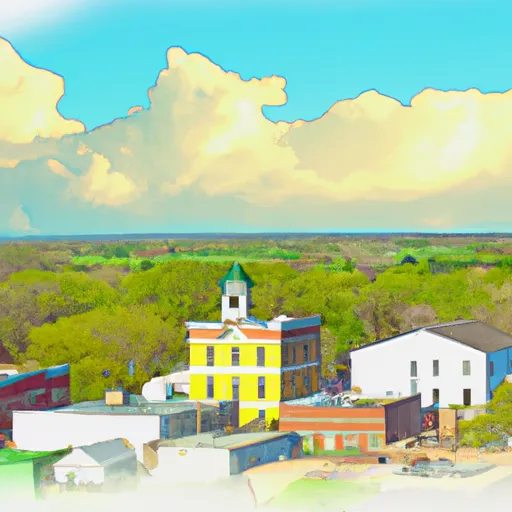°F
°F
mph
Windspeed
%
Humidity











Mount Ayr is a small town located in Ringgold County, Iowa. The climate in Mount Ayr is classified as humid continental, with warm summers and cold winters. Average temperatures range from around 20°F (-6°C) in winter to 85°F (29°C) in summer. Precipitation is fairly evenly distributed throughout the year, with an average annual rainfall of around 40 inches (102 cm) and snowfall of approximately 30 inches (76 cm).
Hydrologically, Mount Ayr is situated within the Grand River Watershed. The primary hydrological constituents in the area include the Grand River and its tributaries, which provide opportunities for fishing, boating, and other water-based activities. The region also features several small lakes and ponds, creating additional recreational opportunities for outdoor enthusiasts.
Outdoor recreation opportunities in Mount Ayr are abundant. The town is surrounded by picturesque landscapes, offering opportunities for hiking, biking, and nature walks. Local parks provide picnic areas, playgrounds, and sports facilities for residents and visitors. Golf enthusiasts can enjoy the Mount Ayr Country Club, while hunters and wildlife enthusiasts can explore the nearby public hunting areas.
Overall, Mount Ayr provides a favorable climate for outdoor activities, ample hydrological resources, and various recreational opportunities to enjoy the natural beauty of the area.
Weather Forecast
Mount-Ayr receives approximately 906mm of rain per year, with humidity levels near 80% and air temperatures averaging around 10°C. Mount-Ayr has a plant hardyness factor of 5, meaning plants and agriculture in this region thrive during a short period during spring and early summer. Most plants will die off during the colder winter months.
Regional Streamflow Levels
165
Cubic Feet Per Second
205
Cubic Feet Per Second
100
Cubic Feet Per Second
8
Cubic Feet Per Second
Nearby Camping
| Camping Area | Reservations | Toilets | Showers |
|---|---|---|---|
| Blue Springs County Campground | |||
| Prospect City Park | |||
| Lake Jacomo - Fleming Park |



